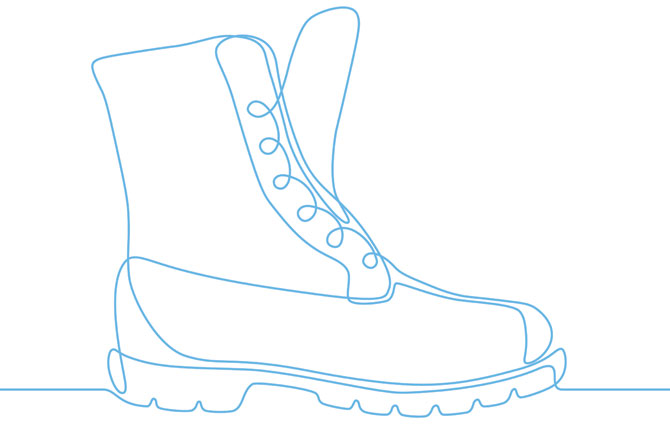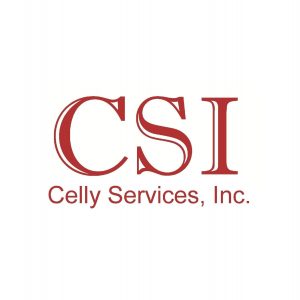By CSI
Recently, an automobile dealer was cited for failure to provide safety shoes. Cal/OSHA assessed a penalty of $5,850 for this serious violation. California Court of Appeals has also upheld a citation against employers not providing proper safety footwear. See Home Depot U.S.A., Inc. v. Cal. Occupational Safety & Health Appeals Bd., E070417 (Cal. Ct. App. Oct. 17, 2019). After this California Court of Appeals decision, we believe that citation for failure to have safety shoes is low-hanging fruit for OSHA inspectors. Dealerships would now be a frequent target for citations for failure to provide safety shoes for employees.
Safety inspections of the shop and parts department have revealed that many employees are not wearing appropriate footwear to adequately protect them from foot injuries caused by crushing or falling objects, such as a rotor or a battery. Sharp objects left on the shop floor can also penetrate the shoe and injure the foot. Footwear in the shop area must be slip-resistant to protect employees should they encounter slippery surfaces (slip hazards are common due to accidental spills of lubricants in the shop). The porters are subject to abnormally wet locations (car wash), and as such, their shoes must provide traction.
WHAT DO THE CALIFORNIA REGULATIONS SAY:
The Cal/OSHA regulation (T8CCR3385) is stated as follows:
(a) Appropriate foot protection shall be required for employees who are exposed to foot injuries from electrical hazards, hot, corrosive, poisonous substances, falling objects, crushing, or penetrating actions, which may cause injuries or who are required to work in abnormally wet locations.
(b) Footwear which is defective or inappropriate to the extent that its ordinary use creates the possibility of foot injuries shall not be worn.
(c) (1) Protective footwear for employees purchased after January 26, 2007, shall meet the requirements and specifications in American Society for Testing and Materials (ASTM) F 2412-05, Standard Test Methods for Foot Protection and ASTM F 2413-05, Standard Specification for Performance Requirements for Foot Protection which are hereby incorporated by reference. The ASTM standard as quoted in the OSHA standard has been updated. See note below.
Note 1: ASTM F2412-18a and ASTM F2413-18 are the most current standards in the industry. ASTM F2413-18 contains basic requirements to evaluate footwear, which include: Impact resistance (I), Compression resistance (C), Metatarsal protection (M.T.), and Conductive properties (CD) to limit static electricity buildup. In addition to these requirements, this standard requires labeling on the safety footwear to identify specific protections.
Note 2: Cal/OSHA regulations, as mentioned above, state that footwear that creates the possibility of foot injuries shall not be worn and hence, any shoes that may cause injuries from ordinary use in the shop area should not be used.
Safety inspections of the shop and parts department have revealed that many employees are not wearing appropriate footwear to adequately protect them from foot injuries caused by crushing or falling objects, such as a rotor or a battery.
BEST PROTECTION: Shoes for staff must meet ASTM standard as listed in Note(s) above. The shoe must have metatarsal protection with a skid resistance sole. Metatarsal protectors consist of a guard that fits over the instep protecting the top of the foot from heavy items, and are normally manufactured from aluminum, steel, or lightweight composites. The car wash staff and any staff that encounter slippery surfaces must also wear shoes with soles that provide slip resistance and good traction.
HAZARD ASSESSMENT: OSHA regulations require that the employer conduct a workplace hazard assessment and provide P.P.E. protection from physical and health hazards present at the workplace. If the hazard assessment of parts and service employees indicates the possibility of a foot hazard injury from falling objects, P.P.E. should be provided. See Title 8 California Code of Regulations Section 3380.
WHO PAYS-CA: The California Labor Code requires employers to “furnish and use safety devices and safeguards …” (Labor Code § 6401). The term “safety device” includes “any practicable method of mitigating or preventing” danger. Protective footwear is covered as a safety device. The Labor Code also requires employers to “provide and use safety devices and safeguards reasonably adequate to render the employment and place of employment safe.” (Labor Code § 6403). Legal opinion on this matter has been made clear by the California Supreme Court. The Court has ruled that the words “provide” and “furnish” mean that the employer both supplies and pays for the personal protective gear. (See Bendix Forest Products Corp. v. Division of Occupational Safety & Health (1979) 25 Cal. 3rd 465, 471-473).
PROTECTIVE SHOE POLICY & ENFORCEMENT: The employer must provide shoes to each employee subject to foot injury hazards. Since shoes must be fitted for size and comfort, it is practical to seek help from a professional shoe supply company. Replacement upon wear and tear of the P.P.E. is also the employer’s responsibility, along with instructions on proper usage, care, cleanliness, and maintenance. A written protective footwear policy should be adopted and distributed to all employees, and employee acknowledgment should be retained in files. Enforcement of policy and disciplinary action against employees violating the policy must also be put into effect.
SUMMARY: Proper footwear for certain employees is not an option but is a requirement under the law. Employees with their feet protected are less likely to be injured from falling objects. Shoes with good traction help mitigate slip and fall hazards. Fewer injuries translate to fewer workers’ compensation claims and a reduction in related premiums. Improved productivity, better employee morale, and increased shop efficiency are also a given.
DISCLAIMER: This newsletter’s contents are merely for informational purposes only and are not to be considered legal advice. Employers must consult their lawyer for legal matters and EPA/OSHA consultants for Environmental, Health & Safety matters. The article was authored by Sam Celly of Celly Services, Inc., who has helped automobile dealers comply with E.P.A. and OSHA regulations since 1987. Sam received his B.E. (1984) and MS (1986) in Chemical Engineering, followed by a J.D. from Southwestern University School of Law (1997). Our newsletters can be accessed at epaoshablog.com. Your comments/questions are always welcome. Please send them to sam@cellyservices.com.









